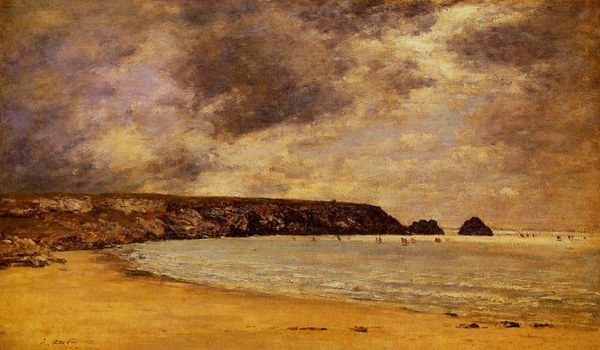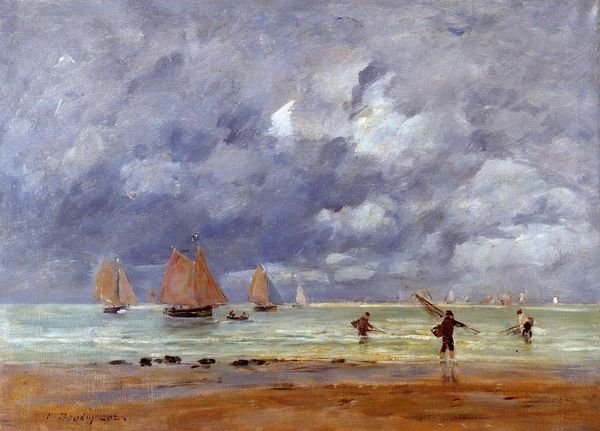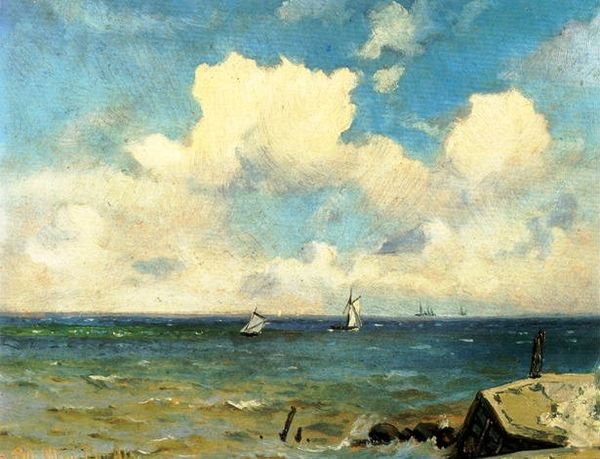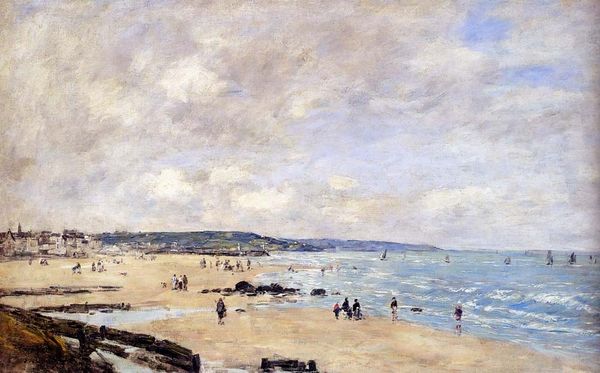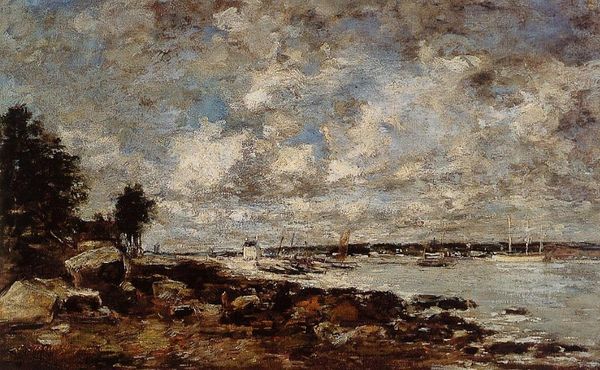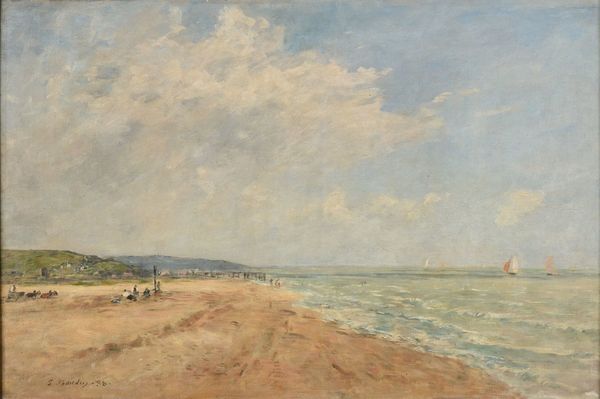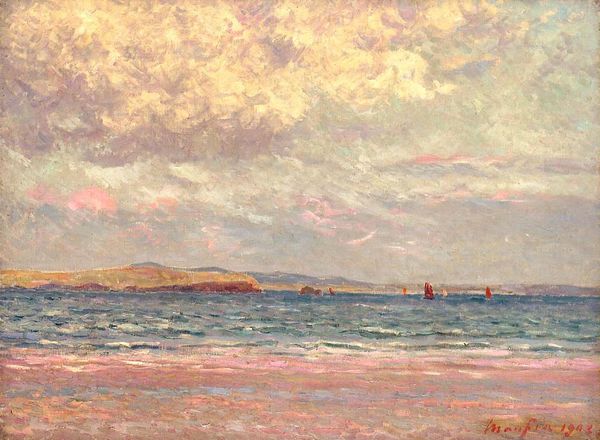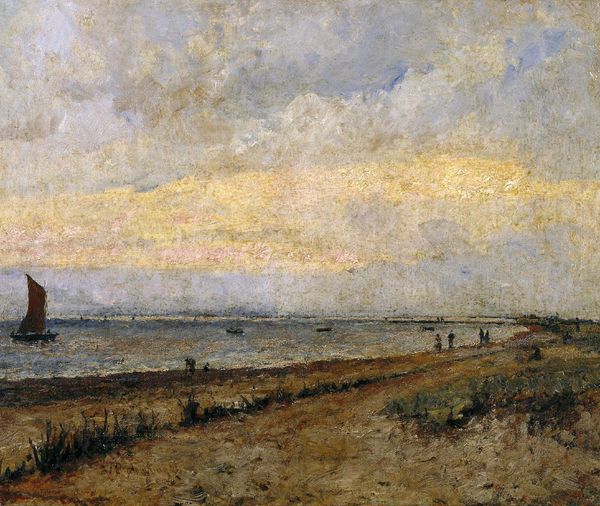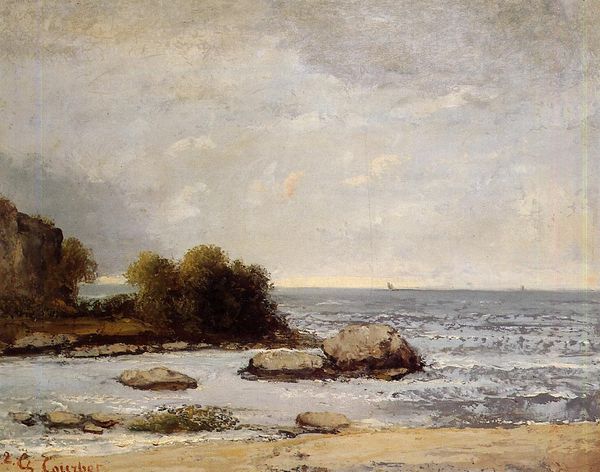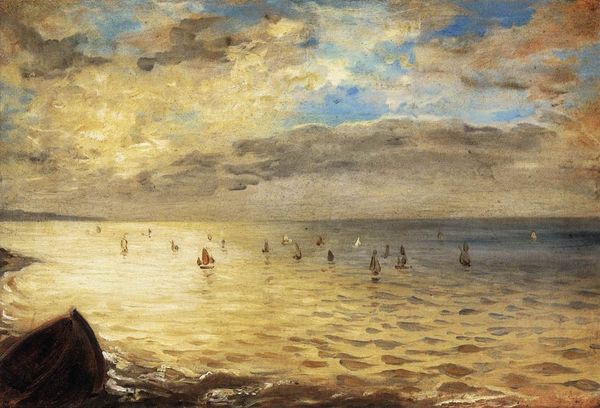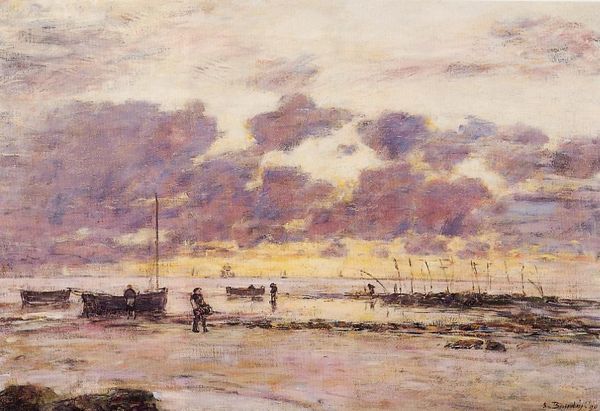
Copyright: Public domain
Editor: So, this is "The Tourgeville Shores," an oil painting done en plein air by Eugène Boudin in 1894. The palette is predominantly muted browns and grays, and it gives me this sense of the ephemerality of a fleeting moment captured in paint, almost like a memory fading at the edges. What catches your eye when you look at it? Curator: What strikes me first is the liminal space it occupies. Boudin presents us with the beach – the border between land and sea, a place of transitions. Historically, beaches, and the sea more generally, have symbolized the unconscious, the place where dreams and the unknown reside. Notice how the sky dominates the canvas; does it evoke a specific feeling? Editor: I suppose it's somber, with the dark clouds, but also serene because the brushstrokes are so soft and blended. Does that have to do with Impressionism? Curator: Partly. The Impressionists were interested in capturing the sensory experience, not just a literal representation. Boudin's sky acts almost as a mirror, reflecting and amplifying the mood of the viewer. Beyond technique, think about the deeper implications of constantly shifting atmospheric conditions as a symbol of change and the human condition. Consider those tiny figures on the beach - how do they relate to the landscape? Editor: They seem so small and insignificant compared to the vastness of the sky and sea. It’s as if Boudin is saying something about human insignificance in the face of nature. Curator: Precisely! They are archetypes. Boudin's composition is laden with meaning. What could these travelers, dwarfed by their surroundings, represent in the larger symbolic landscape of the human psyche? Editor: I guess I never really considered how much a landscape painting could be about more than just the pretty scenery. It's fascinating to think about how symbols and cultural memory shape what we see. Curator: Indeed! Art allows us to probe at memory. Understanding those symbols allows us to participate more fully in that cultural memory. It certainly makes you rethink how the landscape carries stories and meanings that are culturally inherited.
Comments
No comments
Be the first to comment and join the conversation on the ultimate creative platform.
